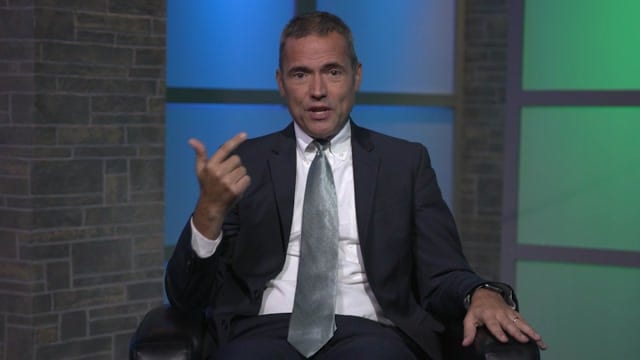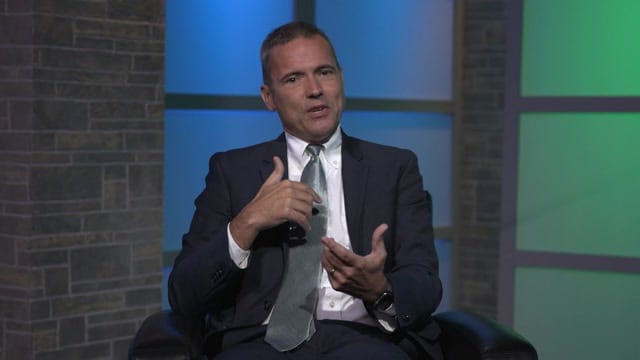
Gary Hamel recently asked readers of the Harvard Business Review to gauge the extent of “bureausclerosis” within their organization using his “Bureaucracy Mass Index” or BMI tool. Since then, he’s received over 7,000 responses from a truly diverse group of participants.
Here are 10 hard facts that emerged from the survey.
1. The blight of bureaucracy seems inescapable
For each completed survey, we calculated an overall BMI score by aggregating responses across seven categories of bureaucratic drag: bloat, friction, insularity, disempowerment, risk aversion, inertia and politicking. On our scale, a score of 60 represents a moderate degree of bureaucratic drag, while anything less than 40 indicates a relative absence of bureaucracy. Of the responses tallied, 64% reported a BMI of more than 70, while less than 1% had a BMI under 40.
Not surprisingly, BMI scores were correlated with organizational size. The average BMI for companies with more than 5,000 employees was 72. Of the respondents who reported a BMI of less than 40, two-thirds worked in organizations with fewer than 100 employees. This confirms what most of us have long suspected: large companies suffer from managerial diseconomies of scale.
2. Bureaucracy is growing not shrinking
Nearly two-thirds of respondents felt their organization had become more bureaucratic—more centralized, more rule-bound and more conservative—over the past few years. Only 14% of respondents said their organizations had becomes less bureaucratic.
The individuals who feel most hamstrung by bureaucracy are the ones most directly involved in creating customer value.
Interestingly, individuals working in customer service, sales, production, logistics and R&D were more likely to feel that bureaucracy was growing than those working in staff functions like HR, finance, planning, purchasing and administration. In other words, the individuals who feel most hamstrung by bureaucracy are the ones most directly involved in creating customer value.
3. Organizations aren’t becoming flatter
Despite all the rhetoric about holocracy and flatarchies, the average respondent works in an organization that has more than six management layers. In large organizations (more than 5,000 employees) front line employees are buried under eight or more layers of management.
4. Bureaucracy is a time suck
BMI survey-takers reported spending an average of 28% of their time—more than one day a week—on bureaucratic chores such as preparing reports, attending meetings, complying with internal requests, securing sign-offs and interacting with staff functions.
Moreover, a significant portion of that work seems to be creating little or no value. Less than 40% of respondents found typical bureaucratic processes (e.g. budgeting, goal-setting, performance reviews) to be “very helpful.” Another indicator of bureaucratic waste: 48% of respondents said their ability to deliver value would be either unaffected or enhanced by a 30% reduction in the number of head office staffers.
5. Bureaucracy is the enemy of speed
Two-thirds of respondents believe that bureaucracy is a significant drag on the pace of decision-making in their organization—a number that rises to nearly 80% in large companies. Negotiating budget exceptions—often necessary when a company must move quickly—was also impeded by bureaucracy. The average time for getting approval for an un-budgeted expenditure was 20 days or more in large organizations, versus 13 days in companies with less than 100 employees.
6. Bureaucracy produces parochialism
BMI respondents spend 42% of their time on internal issues—resolving disputes, wrangling resources, sorting out personnel issues, negotiating targets and other tedious domestic tasks. Most swamped are executives in large companies who devote nearly half of their time to in-house matters. The worrying implication: senior leaders, who are typically charged with creating strategy, are significantly less externally-focused than their subordinates. Little wonder, then, that incumbents are often slow to respond to emerging threats and opportunities.
7. Bureaucracy undermines empowerment
When respondents were asked whether they had “substantial” or “complete” autonomy to (a) set priorities, (b) decide on work methods, and (c) choose one’s own boss, only 11% answered in the affirmative. In a similar vein, respondents estimated that less than 10% of the employees in their organizations could spend $1,000 without getting a sign-off from their boss.
A further sign of disempowerment: more than three quarters of respondents indicated that front-line employees were either “never” or only “occasionally” involved in the design and development of major change initiatives. Since change that is imposed is often resisted, this lack of involvement is undoubtedly a contributor to the high failure rates of major change programs.
8. Bureaucracy frustrates innovation
New ideas are the lifeblood of any organization, yet only 20% of respondents said that unconventional ideas were greeted with interest or enthusiasm in their organization. 80% said new ideas were likely to encounter indifference, skepticism or outright resistance. Equally troubling is the lack of support for experimentation.
Companies like Google, Amazon, Facebook and Intuit recognize the value of bottom-up innovation and make it easy for employees to launch small-scale experiments. Not so for most of the organizations in our survey. 96% of respondents working in companies with more than 1,000 employees said it was “not easy” or “very difficult” for a front-line employee to launch a new initiative.
9. Bureaucracy breeds inertia
In a bureaucracy, change programs are implemented top-down. Problem is, by the time an issue is big enough to capture top management’s scarce attention, the organization is already on the back foot.
Not surprisingly, nearly 60% of those surveyed said that change programs in their organization were “mostly,” or “almost always” focused on catching up. Less than 10% of the respondents from large companies said change programs were “mostly” or “almost always” focused on breaking new ground.
10. Bureaucracies are petty and political
In a formal hierarchy, competition for influence and advancement is a zero-sum game—hence the prevalence of backbiting and politicking revealed in our survey. 64% of respondents claimed that political skills “often” or “almost always” influence who gets ahead. In large organizations, that figure jumps to 77%.
While disturbing, this isn’t surprising. In a bureaucracy, power often goes to the most politically astute rather than the most competent. While we may live in the era of big data and information transparency, it seems that office politics hasn’t advanced much from the sort of noxious gamesmanship portrayed in television series like Mad Men and House of Cards.
Taken as a whole, the BMI survey provides yet more evidence of the toll bureaucracy takes on productivity and resilience. Bureaucracy is, quite literally, a tax on human accomplishment. So, what prevents us from dismantling bureaucracy? The problem isn’t a lack of role models. Companies like Nucor, Morning Star, Spotify and Haier have demonstrated that it’s possible to run large, complex organizations with a minimum of bureaucracy, and that doing so yields substantial performance advantages.
The real barrier, according to our survey, is an unwillingness among executives to share power and bureaucratic “lock in.” Interestingly, while nearly two-thirds of front line associates viewed power lust as a barrier to cutting bureaucracy, only a third of big-company CEOs shared that view. Similarly, while 54% of lower level employees thought bureaucracy was hard to root out because it was “familiar and entrenched,” only 20% of CEOs saw this as barrier.
If there’s broad agreement that employees are capable of self-management, why do so many of them remain mired in a bureaucratic morass?
So, who’s right here? Front-line employees who believe that bureaucracy is vigorously defended and deeply embedded, or senior executives who see bureaucracy as a less fearsome foe?
As you ponder this question, we should note that there was one area of consensus. Senior leaders and front-line employees agreed that a lack of information and competence on the front lines isn’t a barrier.
If there’s broad agreement that employees are capable of self-management, why do so many of them remain mired in a bureaucratic morass?
Either senior leaders are more reluctant to share power and more skeptical about their employees’ capabilities than they’re admitting, or there are other, still deeper, barriers to banishing bureaucracy.
The BMI is a first step toward changing all this. As the size of the bureaucratic tax on human accomplishment becomes more visible, inaction will become more difficult to defend.
If, as they claim, leaders are willing to share power, and if, as our respondents believe, employees are capable of exercising it wisely, then there’s no excuse for not getting on with the hard but eminently worthwhile task of busting bureaucracy.
This article originally appeared on LinkedIn here.




 I have learned through the Summit to cast the vision to others and now I bring others along on these trips. These are people who will be going to the mission field long after I’m no longer able. One of my personal goals is to get others to go on these trips so that God’s Kingdom will advance and lives will be forever changed like mine was. I love the opportunity to have a strong influence on helping to disciple women who go on these trips.
I have learned through the Summit to cast the vision to others and now I bring others along on these trips. These are people who will be going to the mission field long after I’m no longer able. One of my personal goals is to get others to go on these trips so that God’s Kingdom will advance and lives will be forever changed like mine was. I love the opportunity to have a strong influence on helping to disciple women who go on these trips.








Recent Comments